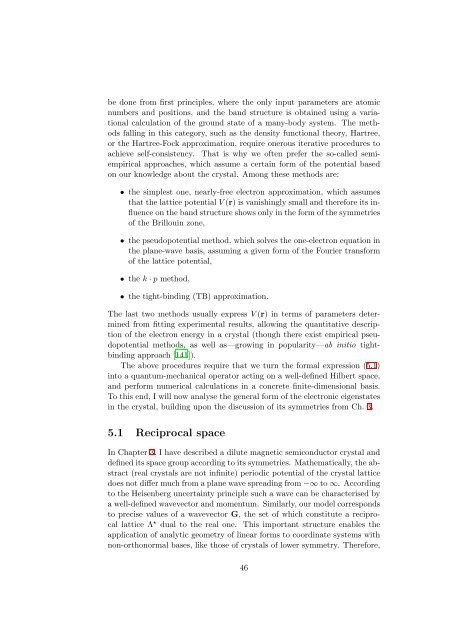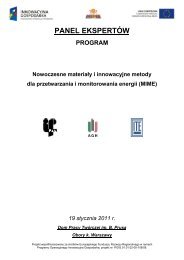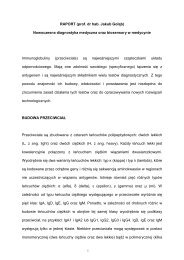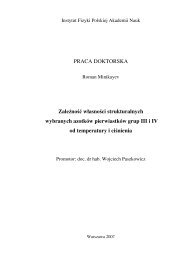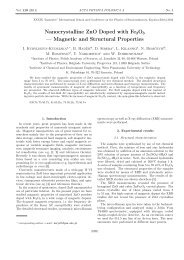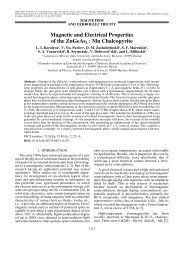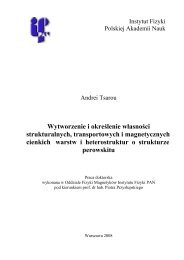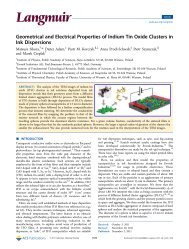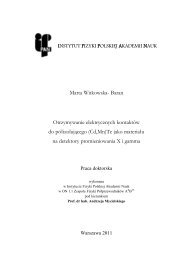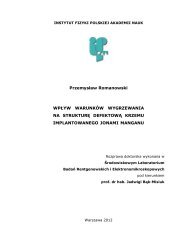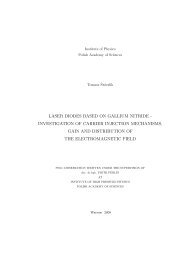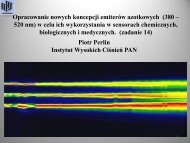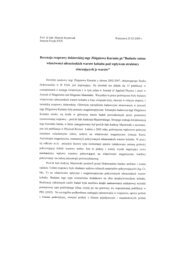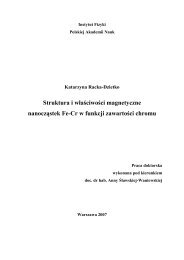Spin waves and the anomalous Hall effect in ferromagnetic (Ga,Mn)As
Spin waves and the anomalous Hall effect in ferromagnetic (Ga,Mn)As
Spin waves and the anomalous Hall effect in ferromagnetic (Ga,Mn)As
Create successful ePaper yourself
Turn your PDF publications into a flip-book with our unique Google optimized e-Paper software.
e done from first pr<strong>in</strong>ciples, where <strong>the</strong> only <strong>in</strong>put parameters are atomicnumbers <strong>and</strong> positions, <strong>and</strong> <strong>the</strong> b<strong>and</strong> structure is obta<strong>in</strong>ed us<strong>in</strong>g a variationalcalculation of <strong>the</strong> ground state of a many-body system. The methodsfall<strong>in</strong>g <strong>in</strong> this category, such as <strong>the</strong> density functional <strong>the</strong>ory, Hartree,or <strong>the</strong> Hartree-Fock approximation, require onerous iterative procedures toachieve self-consistency. That is why we often prefer <strong>the</strong> so-called semiempiricalapproaches, which assume a certa<strong>in</strong> form of <strong>the</strong> potential basedon our knowledge about <strong>the</strong> crystal. Among <strong>the</strong>se methods are:• <strong>the</strong> simplest one, nearly-free electron approximation, which assumesthat <strong>the</strong> lattice potential V(r) is vanish<strong>in</strong>gly small <strong>and</strong> <strong>the</strong>refore its <strong>in</strong>fluenceon <strong>the</strong> b<strong>and</strong> structure shows only <strong>in</strong> <strong>the</strong> form of <strong>the</strong> symmetriesof <strong>the</strong> Brillou<strong>in</strong> zone,• <strong>the</strong> pseudopotential method, which solves <strong>the</strong> one-electron equation <strong>in</strong><strong>the</strong> plane-wave basis, assum<strong>in</strong>g a given form of <strong>the</strong> Fourier transformof <strong>the</strong> lattice potential,• <strong>the</strong> k ·p method,• <strong>the</strong> tight-b<strong>in</strong>d<strong>in</strong>g (TB) approximation.The last two methods usually express V(r) <strong>in</strong> terms of parameters determ<strong>in</strong>edfrom fitt<strong>in</strong>g experimental results, allow<strong>in</strong>g <strong>the</strong> quantitative descriptionof <strong>the</strong> electron energy <strong>in</strong> a crystal (though <strong>the</strong>re exist empirical pseudopotentialmethods, as well as—grow<strong>in</strong>g <strong>in</strong> popularity—ab <strong>in</strong>itio tightb<strong>in</strong>d<strong>in</strong>gapproach [141]).The above procedures require that we turn <strong>the</strong> formal expression (5.1)<strong>in</strong>to a quantum-mechanical operator act<strong>in</strong>g on a well-def<strong>in</strong>ed Hilbert space,<strong>and</strong> perform numerical calculations <strong>in</strong> a concrete f<strong>in</strong>ite-dimensional basis.To this end, I will now analyse <strong>the</strong> general form of <strong>the</strong> electronic eigenstates<strong>in</strong> <strong>the</strong> crystal, build<strong>in</strong>g upon <strong>the</strong> discussion of its symmetries from Ch. 3.5.1 Reciprocal spaceIn Chapter 3, I have described a dilute magnetic semiconductor crystal <strong>and</strong>def<strong>in</strong>ed its space group accord<strong>in</strong>g to its symmetries. Ma<strong>the</strong>matically, <strong>the</strong> abstract(real crystals are not <strong>in</strong>f<strong>in</strong>ite) periodic potential of <strong>the</strong> crystal latticedoesnotdiffermuchfromaplane<strong>waves</strong>pread<strong>in</strong>gfrom−∞to∞. Accord<strong>in</strong>gto <strong>the</strong> Heisenberg uncerta<strong>in</strong>ty pr<strong>in</strong>ciple such a wave can be characterised bya well-def<strong>in</strong>ed wavevector <strong>and</strong> momentum. Similarly, our model correspondsto precise values of a wavevector G, <strong>the</strong> set of which constitute a reciprocallattice Λ ⋆ dual to <strong>the</strong> real one. This important structure enables <strong>the</strong>application of analytic geometry of l<strong>in</strong>ear forms to coord<strong>in</strong>ate systems withnon-orthonormal bases, like those of crystals of lower symmetry. Therefore,46


